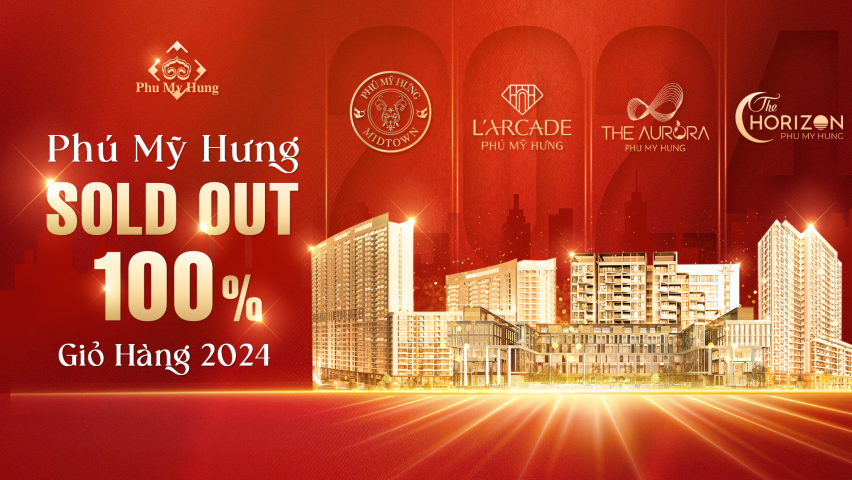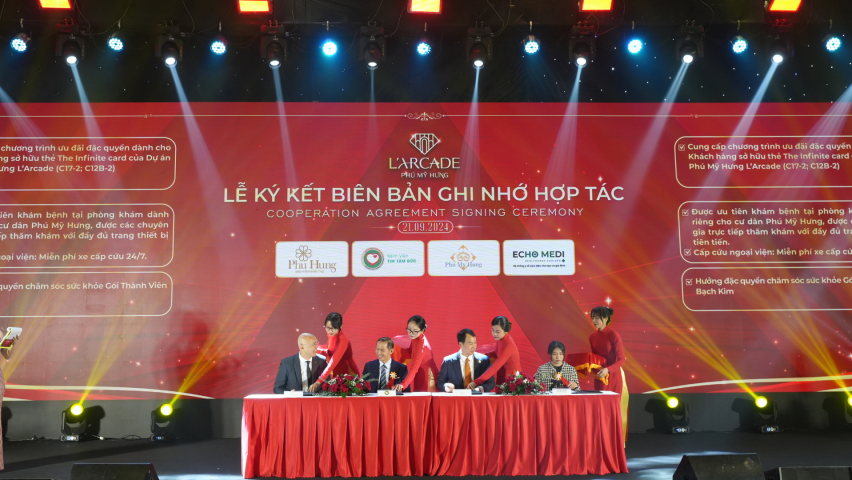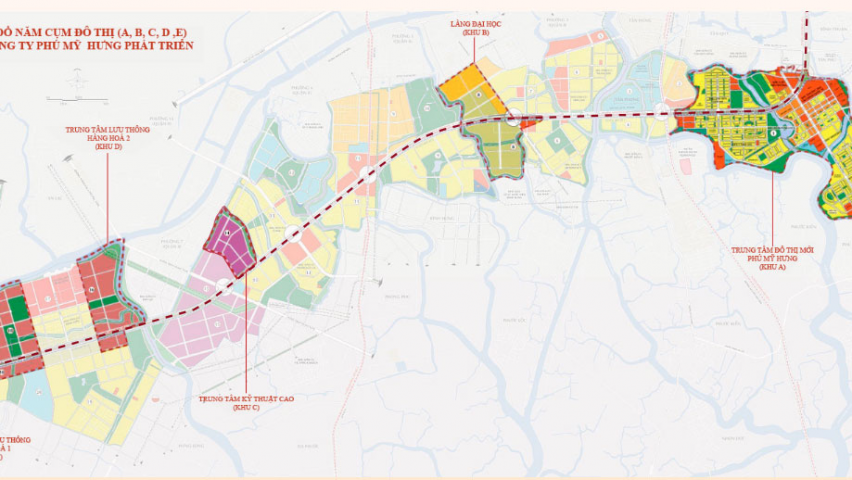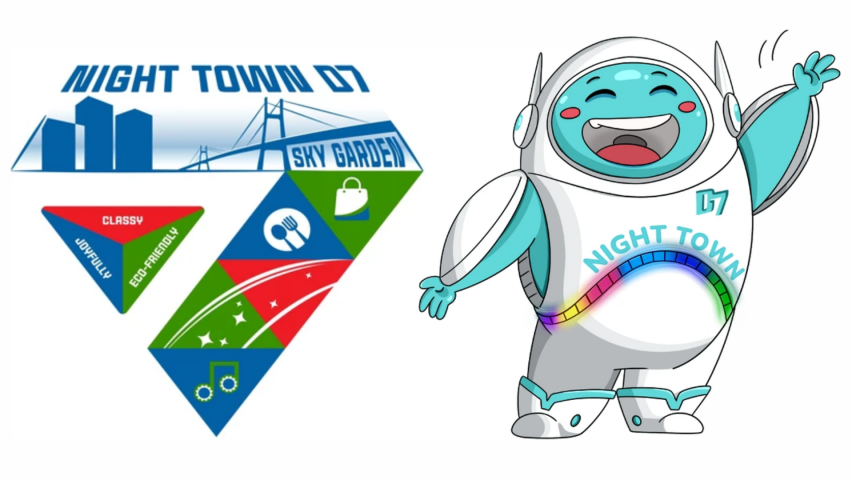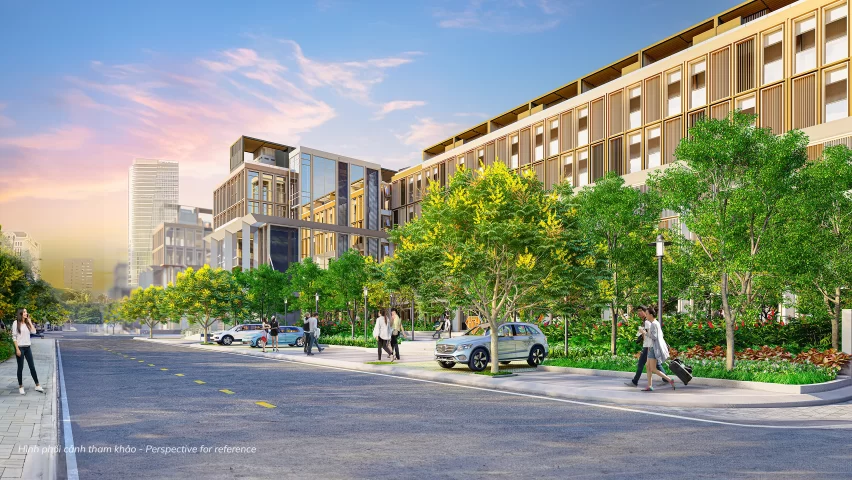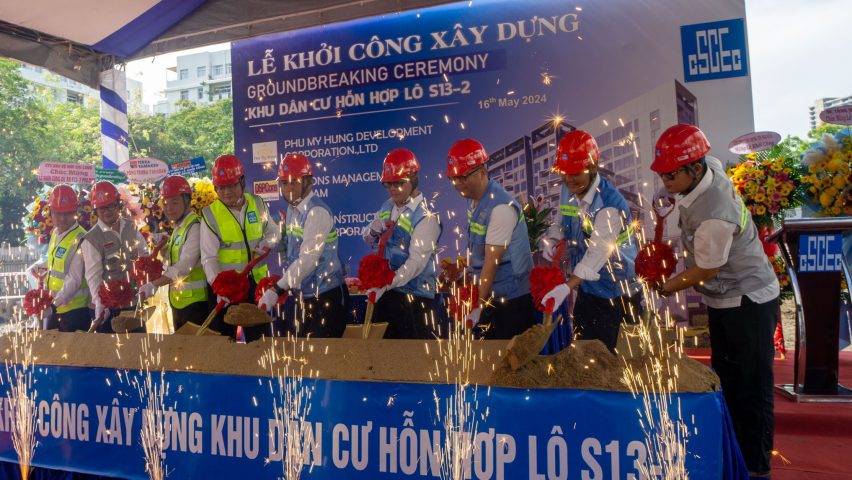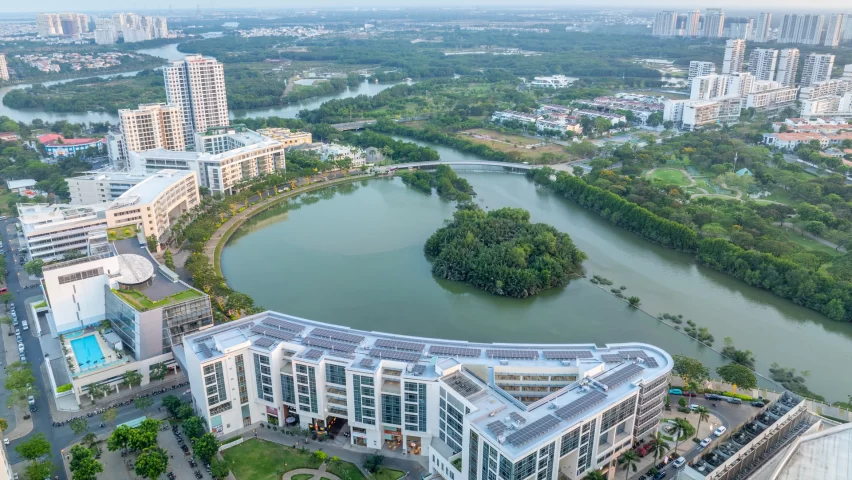Second instalment – The story of Saigon South
Phu My Hung was the third project of Lawrence S. Ting’s Central Trading & Development (CT&D) Group in Vietnam. The first two were the Tan Thuan Export-Processing Zone and Hiep Phuoc Power Plant.
The Tan Thuan Export-Processing Zone (EPZ) was initiated by a group of economists in Ho Chi Minh City (HCMC) in the eve of Doi Moi (economic reform). This group was famously known as “the Friday Group” since its members met every Friday to discuss their issues of interests. Much has been written about their efforts, struggles and sacrifices as well as the important role they played in the development of HCMC and the country in general.
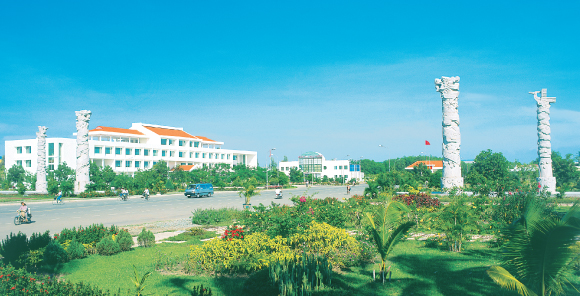 Built on a 300-hectare area of infertile alkali land in Nha Be District, Tan Thuan EPZ was the first in Vietnam. It was later considered a world-class EPZ and ranked among the best in Asia-Pacific.
Built on a 300-hectare area of infertile alkali land in Nha Be District, Tan Thuan EPZ was the first in Vietnam. It was later considered a world-class EPZ and ranked among the best in Asia-Pacific.
Now that investors are treated equally anywhere in Vietnam, it makes little sense creating an EPZ. But that was not the case when Tan Thuan EPZ was founded. Many foreign investors were attracted to the EPZ after the government adopted the economic reform policy, and Tan Thuan set a role model for the later development of industrial zones.
CT&D was among the first foreign investors to arrive in Vietnam, not so many of whom decided to consider Vietnam their second home and stay for a long term. They don’t pay lip service but show support in their actions.
Dr Le Van Nam, former chief architecture of HCMC, recalled that Lawrence S. Ting had a lot of questions for him about the design master plan of the city, as well as the history of Saigon-Gia Dinh. Nam told him that the city planned to develop north- and northeast-wards, in the direction of Bien Hoa and Nhon Trach, along the national road 51. Local officials at that time also considered expanding southwards, but were still reluctant. Dr Nam was surprised when Ting said he was interested in the southern area of the city, especially the swampland of Nha Be District. According to Dr Nam, Ting was a man of insight and shared the same point of view with former Prime Minister Vo Van Kiet concerning the direction for the city’s expansion.
In his autobiography, Vo Tran Chi, then the Communist Party leader of Ho Chi Minh City, wrote: “Tan Thuan EPZ was initiated by Vietnam and supported by him (Mr. Ting), but it was him and Mr. Phan Chanh Duong who initiated the Nguyen Van Linh St. and Phu My Hung new urban area when they were managing a joint venture between CT&D and IPC [Tan Thuan Industrial Promotion Company Limited].” Chi spoke highly of the success in building the Hiep Phuoc Power Plant, which he considered an “even more adventurous project.” Nguyen Mai, the former Vice Director of the State Committee of Cooperation and Investment, said that “none of us [government officials] ever thought of” the idea of building Phu My Hung new urban area and Nguyen Van Linh St.
A daring proposal was made of having a blueprint master plan for the 2,600 hectare Saigon South urban area. It was Ting who proposed and organized a contest participated by many world-famous architects. Finally the master plan of Skidmore, Owings & Merrill was selected. It was later approved by then Prime Minister Kiet, and went on to win the two honorable awards for best urban design: The Progressive Architecture Citation in 1995 and the American Institute of Architecture (AIA) honor award in 1997.
The master plan not only satisfied international standards of accommodation, culture, education, entertainment, public facilities but also protected the environment features of southern Vietnam.
A unique identity of the master plan was the use of the existing greenery and waterways to re-create a natural environment for the urban area. Strips of land along the waterways were to be reserved for public use. Neighbourhoods were located within walking distance and separated by the waterways. A large area was designated for cultural and public facilities to serve local residents. The master plan also set a developing limit to the south to reserve arable land and the ecosystem and prevent possible uncontrolled urbanization.
Such outstanding features show that the investor and the master planner right in the beginning had a long-term view and considered of utmost importance the public’s benefits. They did not intend to “privatize” public space as claimed by some.
Saigon South and Phu My Hung have become a controversial in the debates of inequality and of urban flooding in the face of global warming. We will discuss these issues later.
The South Saigon Urban Area was originally planned to have 21 zones of which the Phu My Hung Development Corp. would develop five along Nguyen Van Linh St. The Phu My Hung was developed within these zones, and the company has carried out part of its plan. The other zones were to be developed by other local companies, but, according to Pham Chanh Duong, “no one care about the original blueprint master plan anymore.” He said the other developers considered the master plan outdated and thus no longer stick to it.
(Second instalment of the Phu My Hung series. To be continued) – Thanh Nien News




